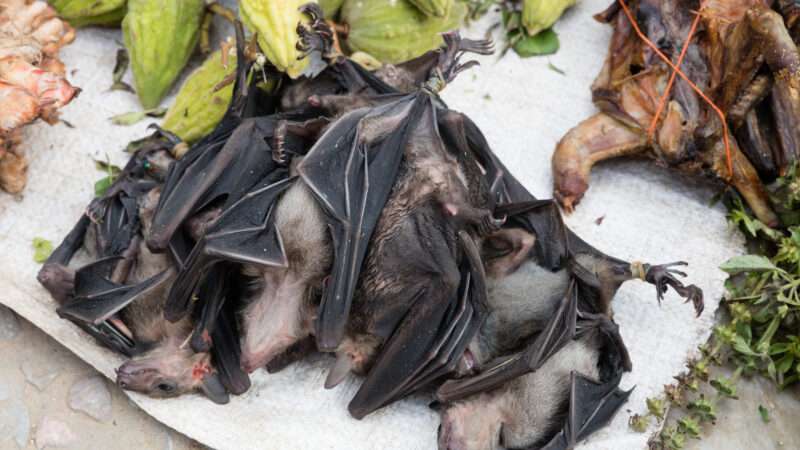
Researchers estimate that around 60 percent of known infectious diseases and up to 75 percent of new or emerging infectious diseases jumped from animals into humans. This includes the COVID-19 coronavirus which likely spread from bats to people either naturally or possibly through a lab leak.
Wouldn’t it be great if wild animals could be inoculated against the various diseases they host so that those microbes never get a chance to spread to humans? To that end, two University of Idaho biologists, Scott Nuismer and James Bull, outlined in a 2020 Nature Ecology & Evolution article how self-disseminating vaccines could be developed to suppress animal diseases. The researchers distinguished between transferable and transmissible vaccines. A transferable vaccine might consist of a paste applied to the fur of a bat which then transfers the vaccine to all of the bats that groom it. Transferable vaccines are much like the rabies vaccines that are now spread in the wild through baits.
A transmissible vaccine is one in which, say, an innocuous virus prevalent in the host species is genetically modified by inserting immunogenic genes from the target pathogens such as SARS, Ebola, or Lassa fever viruses. To guard against possible deleterious evolutionary changes, the transmissible vaccine’s viral vector could be made self-limiting such that over time the inserted immunogenic genes disappear so the subsequent generations eventually revert to the virus’ original innocuous form. The vaccines would be tested on captive populations of relevant animals, ideally at facilities on isolated islands, for safety and efficiency of spread.
As the researchers conclude, “Although the financial investment required to develop and test the first generation of transmissible vaccines is likely to be substantial, it is inconsequential when compared to the cost of viral spillover—more than US$3.6 billion for the response to the West African Ebola epidemic of 2014–2016, US$40 billion for the SARS outbreak of 2003, and US$8 billion per year for canine rabies alone.” These amounts seem antiquated in the light of the trillions in economic damage wreaked by the current pandemic.
In a February 2021 article in the same journal, a group led by Andrew Hebbeler, the global biological policy researcher at Nuclear Threat Initiative, countered that “the substantial safety and security risks around the advancement of transmissible vaccines outweigh potential benefits.” Hebbeler and his colleagues worry specifically that unproven vaccine viruses could escape from isolated testing facilities much like the rabbit haemmorhagic fever virus did in 1995 in Australia. In addition, the modified vaccine viruses could mutate so that their self-limiting features fail, allowing them to spread further than their developers intended.
The researchers’ bigger concerns, however, are the biosecurity implications of self-disseminating vaccines. “Research on candidate transmissible vectors would uniquely focus on engineering and testing both transmissibility and genomic stability, traits which might be directly translated to viruses capable of infecting humans,” they warned. “Viral vectors optimized for these properties could be directly repurposed to deliberately cause harm.”
Already widespread gain of function research on various disease microbes means that that particular biosecurity horse is already well out of the biotech barn. For instance, the National Institutes of Health lifted its ban on gain of function research back in 2017. Even Hebbeler and his colleagues acknowledged that “cost-effective vaccination of reservoir populations would be a great asset” that could “reduce regular spillover of pathogens such as rabies and Lassa virus.” As I have previously argued, the best bio-defense is bio-offense. That’s especially the case against disease viruses harbored by wild species that could one day make the jump to humans and cause another pandemic.
from Latest – Reason.com https://ift.tt/3eSdgDt
via IFTTT